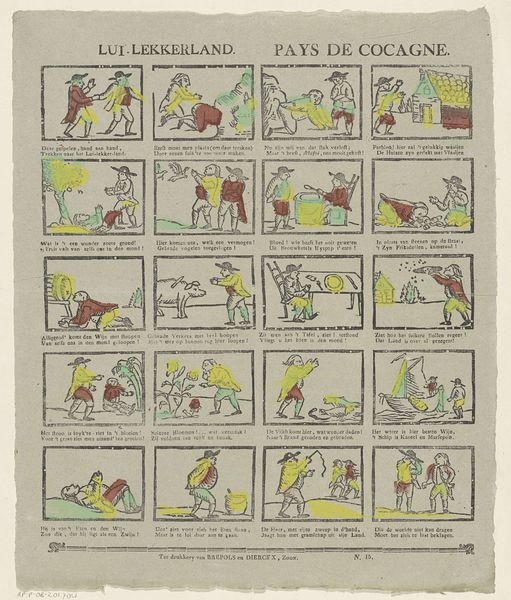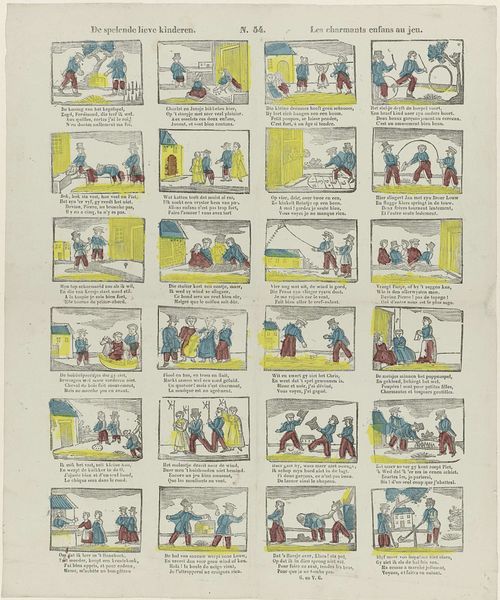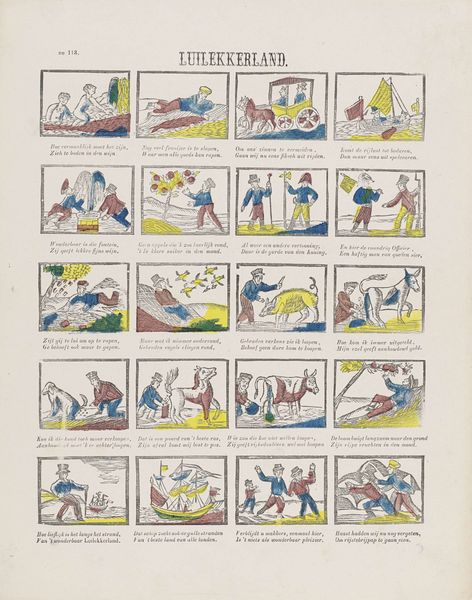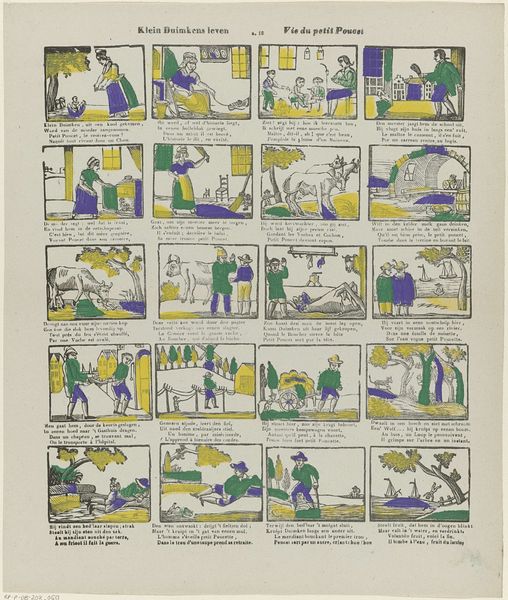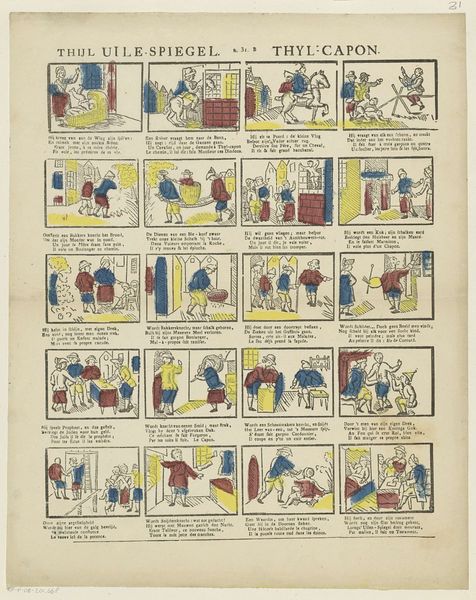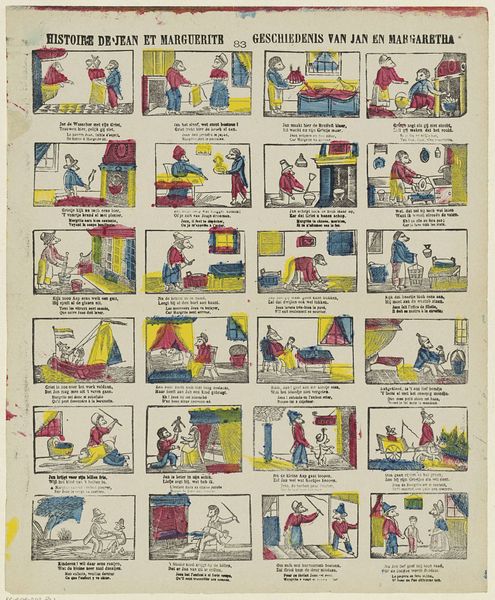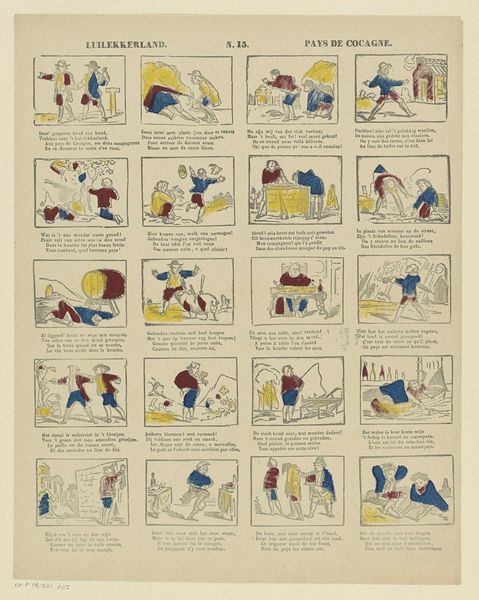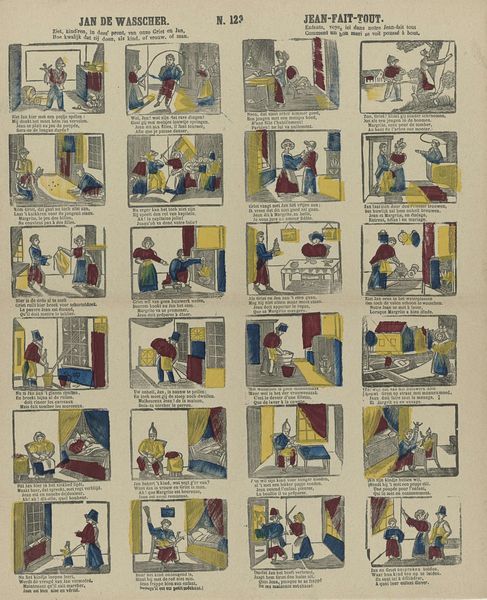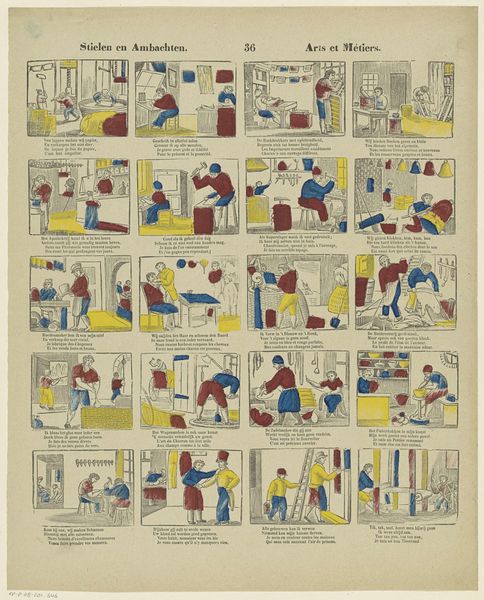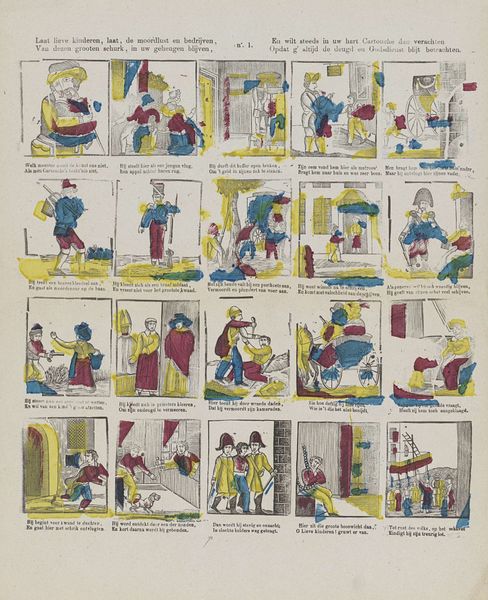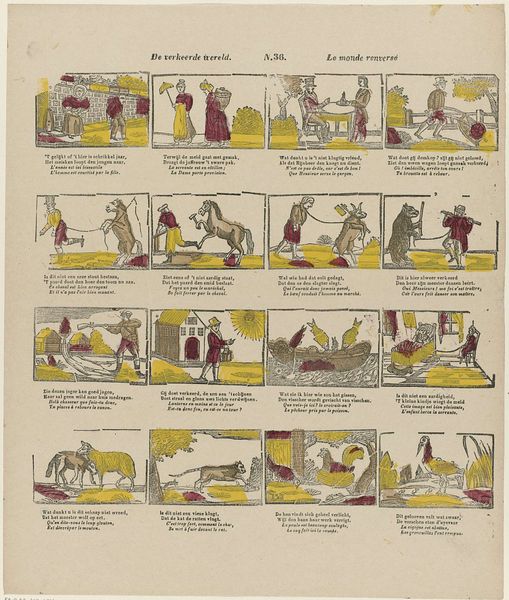
print, engraving
#
narrative-art
#
comic strip
# print
#
traditional media
#
folk-art
#
comic
#
genre-painting
#
engraving
Dimensions: height 417 mm, width 339 mm
Copyright: Rijks Museum: Open Domain
Curator: Here we have a print dating from around 1800 to 1833, made by Philippus Jacobus Brepols. It’s titled "Luilekkerland," or "Pays de Cocagne" in French. It's held here at the Rijksmuseum. Editor: My goodness, what a whimsical piece! It's arranged like a comic strip. The colors are simple—blues, reds, yellows—but create this lighthearted atmosphere. I get a sense of playful abundance, carefree life. Curator: The "Land of Cockaigne" represents a historical satire. It was a popular theme, especially during periods of hardship, depicting a fantastical world of ease, where food and pleasure are freely available. We’re looking at an engraving, allowing for wider distribution to comment on the existing social order and potentially critique labor ethics. Editor: Exactly! Look at the processes depicted – figures sliding down sausages, roasted birds flying directly into mouths! This speaks volumes. What materials made up people’s labor and diet, against an impossible abundance. There’s no toil, no crafting… Only pure consumption visualized as leisure! Curator: Absolutely, and we need to also recognize its political purpose. By presenting a world where everything is provided without labor, the artwork perhaps aimed to remind viewers of the existing socio-economic disparities and question societal structures and work ethics. What do you make of the seemingly nonsensical compositions in each square? Editor: It appears a subversive technique to dismantle hierarchies – there are hints of craftsmanship but ultimately trivialized! It challenges traditional artistic forms of production that mirror an unreal and comical depiction of labour as "optional". Who needs it when roast geese willingly become the consumer’s diet? Curator: This speaks to how visual culture in the 19th century disseminated political ideologies among those able to obtain these images. "Luilekkerland" as popular art offers an interesting example how leisure, class, labor and materiality intersect to question our engagement with political visual vocabularies. Editor: Indeed. And thinking about its form and accessible material—as a cheap, mass-produced engraving – helped popularize these messages among wider audiences who probably craved, if not literally, freedom from conventional toil and hardship. Curator: Considering that, seeing this work today makes one think about utopias but from a historical vantage. Editor: Right! The means and processes behind even an imaginary world tell you much about the actual world it's critiquing.
Comments
No comments
Be the first to comment and join the conversation on the ultimate creative platform.
